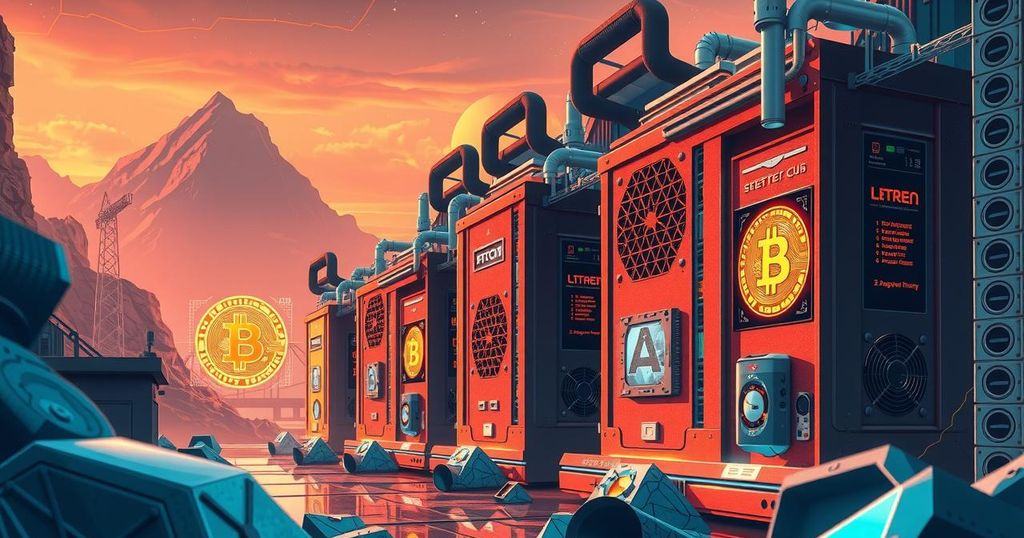Bitcoin Mining Growth Amidst Market Challenges
Bitcoin mining in the U.S. is experiencing a resurgence, driven by federal recognition, state legislation, and innovative business models aimed at fostering growth. President Trump’s executive order established a Strategic Bitcoin Reserve, encouraging local production and reducing environmental objections. With increasing efficiency and supportive policies, the industry is well-positioned for expansion despite volatile market conditions and competitive pressures from other sectors.
Bitcoin mining in the U.S. is on the rise despite recent profit squeezes. The recognition of bitcoin’s proof-of-work by Washington as a strategic asset, along with regulatory clarity from state legislatures, more efficient mining machines, and innovative revenue models, has contributed to the industry’s resilience. This momentum is observable through the increasing network hashrate heading towards one zettahash, despite hashprice stagnating and public miners liquidating their inventories.
The turning point occurred on 6 March 2025 when President Trump signed an executive order establishing a Strategic Bitcoin Reserve. This order highlights the strategic advantages of first-mover nations in accumulating bitcoin and likens it to digital gold due to its limited supply. Concurrently, Arkansas implemented the Data Centers Act of 2023, protecting mining activities, while Oklahoma’s 2024 legislation provided sales tax incentives. Texas also supported miners with revised standards, recognising them as major energy consumers, not as environmental threats.
Federal policies further support this trend. Block’s Proto team has partnered with Core Scientific to provide advanced 3nm modular rigs and create a local manufacturing ecosystem. This agreement reduces risks related to supply chains and import tariffs, signifying a shift towards local fabrication. Environmental concerns regarding bitcoin mining have decreased, with research from Duke University showing mining’s capability to assimilate significant demand without hindering renewable energy efforts, bolstering state enthusiasm for these industrial operations.
The average network hash rate reached 910 EH/s in mid-April, marking a 44% yearly increase. Although the all-in U.S. production cost is approximately $92,000 per bitcoin—marginally above market prices—miners maintain operations, anticipating future price rises. Innovations extend beyond equipment, with initiatives linking digital collectibles to mining revenue and projects like Blockware’s that explore alternative financing methods.
Tether’s recent announcement about directing hashrate to Luke Dashjr’s Ocean pool introduces a method for individual miners to influence block construction, thereby mitigating censorship risks by restoring decentralisation to the mining process. The first solo block mined recently serves as a cultural highlight, demonstrating that individual miners, despite odds, play a vital role in maintaining a balance against increasing industrial centralisation.
Although hashprice has decreased significantly, the increased efficiency within mining operations continues to support growing hashrates. Many mining companies are pivoting towards more efficient equipment rather than stopping expansions, indicated by record hardware orders even amidst selling pressures. Factors such as network-wide efficiency improvements, flexible-load contracts, and supportive policy changes are driving this growth despite competitive challenges from AI data centre demands.
Strategic positioning facilitated by the executive order aligns bitcoin mining with U.S. energy policies, fostering stability for the industry. Moreover, protections from state laws, combined with new funding mechanisms, create an optimistic outlook for the future. With abundant energy resources and sustained investor confidence, the hashrate is set for continued escalation.




Post Comment